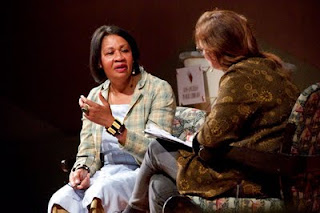SARATOGA SPRINGS >> Jamaica Kincaid will present “The Writer in
Her World,” the annual Frances Steloff Lecture/Reading at Skidmore
College, at 8 p.m. Thursday, Oct. 2, in Gannett Auditorium, Palamountain
Hall.
Admission is free and open to the public. She will receive an honorary doctorate of letters from Skidmore President Phillip Glotzbach. Following her presentation she will respond to audience questions and participate in a book signing.
Author of a wide range of books, including novels, memoirs and polemical works, Kincaid is perhaps best known for “Annie John,” “Lucy,” “At The Bottom of the River,” “Autobiography of My Mother,” “Mr. Potter” and “A Small Place.”
Her most recent book, “See Now Then,” has stirred considerable
controversy, turning as it does on a disastrous marital break-up, which
is said to resemble very closely the demise of Kincaid’s own long-time
marriage to the son of New Yorker editor William Shawn.
Kincaid is a professor at Harvard University and a long-time visiting writer each July at Skidmore’s New York State Summer Writers Institute.
http://www.skidmorenews.com/?p=6100
Admission is free and open to the public. She will receive an honorary doctorate of letters from Skidmore President Phillip Glotzbach. Following her presentation she will respond to audience questions and participate in a book signing.
Author of a wide range of books, including novels, memoirs and polemical works, Kincaid is perhaps best known for “Annie John,” “Lucy,” “At The Bottom of the River,” “Autobiography of My Mother,” “Mr. Potter” and “A Small Place.”
Kincaid is a professor at Harvard University and a long-time visiting writer each July at Skidmore’s New York State Summer Writers Institute.
http://www.skidmorenews.com/?p=6100












